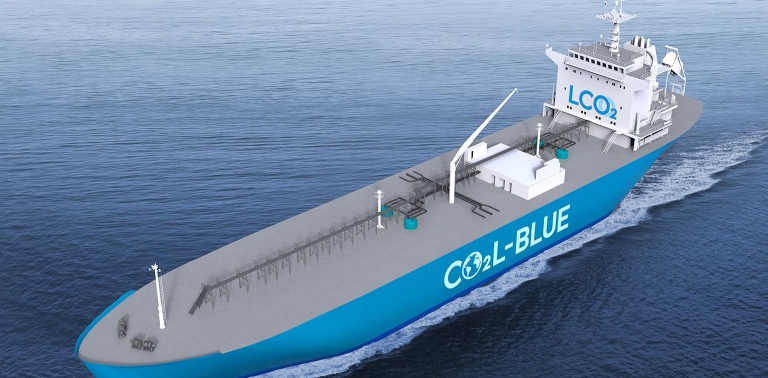Mitsubishi Heavy Industries sets out to commercialise the use of CO2 carriers

The country that created the LNG seaborne trades is setting out to commercialise the shipping of carbon dioxide.
Japanese shipbuilder Mitsubishi Heavy Industries (MHI) has rolled out plans to commercialise a CO2 carrier design by 2025 to support its diversification into the carbon capture sector.
It comes as another Japanese shipbuilder, Kawasaki Heavy Industries, has just launched the world’s first liquified hydrogen carrier, determined to start a new shipping segment, with Japanese shipyards also racing to complete ammonia carrier designs.
MHI’s planned CO2 carriers will be used to support the potential market demand from carbon capture (CCS) projects for CO2 transportation and storage.
In order to liquefy carbon dioxide, which sublimes directly between gaseous and solid states – dry ice – at atmospheric pressures, the temperature must be kept to around −50°C, with a pressure of seven bar, in line with LPG containment systems.
At the end of January, MHI completed a capital investment into Infinium, a US-based company which has proprietary technology converting carbon dioxide and renewable power into electrofuels, which is expected to be used in both air and maritime transportation.
MHI believes Infinium’s electrofuels are drop-in replacements for traditional petroleum-derived products and it will enable commercial transportation industry and logistics operators to make an immediate impact on carbon reduction targets without capital and time-intensive upgrades to transportation infrastructure.
In August last year, MHI collaborated with Kawasaki Kisen Kaisha (K Line) and ClassNK to undertake test operations and measurements for what it claims to be the world’s first small scale ship-based CO2 capture demonstration plant. The two-year project, named Carbon Capture on the Ocean, will convert an existing CO2 capture system for an onshore power plant onto a vessel.
Currently, the maximum capacity for transporting liquefied CO2 is approximately 3,600 cu m, or roughly 1,770 tonnes in dedicated CO2 tankers predominantly with specialist operators such as Larvik Shipping who have been transporting CO2 since 1988.
CO2 shipping has been taking place for 33 years, with the main demand for CO2 coming from the food and beverage industry. The first dedicated CO2 tanker was launched in 1988 in Norway. However, the scale of the yearly CO2 trade flows, and therefore the ship sizes, are much smaller than those needed for CCS projects, something MHI is determined to overcome with its new designs.
Previous CO2 carrier designs have failed to bear fruit. Back in 2010, Hyundai Heavy Industries from South Korea and Maersk Tankers looked into developing next generation liquefied CO2 carriers , but nothing ever materialised from the research.
Another Korean yard, Daewoo Shipbuilding & Marine Engineering (DSME), has also come up with its own CO2 design, though it has not resulted in any orders in the five years since it first published the design.
Carbon capture and storage and opportunities for the shipping industry were under the microscope in the November issue of Splash Extra.
“CO2 as a commodity could well be a new cargo to transport going forward,” Erik Hånell, CEO of Stena Bulk, told Splash Extra in the in-depth look into the nascent technology to ship and bury CO2.

LNG seaborne trade was born in 1959, first voyage from Gulf Mexico to Great Britain carrying LNG. Put the facts right, then write.